Gregory Weiss
age ~61
from Tujunga, CA
- Also known as:
-
- Greg Weiss
Gregory Weiss Phones & Addresses
- Tujunga, CA
- Sylmar, CA
- Los Angeles, CA
- North Hollywood, CA
Work
-
Company:Dave weiner productions
-
Position:Director, web products
Education
-
School / High School:University of Maryland- College Park, MDMay 1999
-
Specialities:General
Ranks
-
Licence:Dist. of Columbia - Active
-
Date:1972
Lawyers & Attorneys

Gregory A Weiss - Lawyer
view sourceLicenses:
Dist. of Columbia - Active 1972

Gregory Weiss - Lawyer
view sourceISLN:
924459480
Admitted:
2008
University:
Benjamin N. Cardozo School of Law

Gregory Weiss - Lawyer
view sourceSpecialties:
Business Litigation
Civil Trial
Class and Antitrust Litigation
Commercial Litigation
Complex Business Litigation
Intellectual Property
Managed Care Litigation
Product Defect Litigation
Civil Trial
Class and Antitrust Litigation
Commercial Litigation
Complex Business Litigation
Intellectual Property
Managed Care Litigation
Product Defect Litigation
ISLN:
914462758
Admitted:
1999
University:
University of Florida, B.A., 1995
Law School:
University of Florida College of Law, J.D., 1998

Gregory Weiss - Lawyer
view sourceOffice:
Weiss & Eason
Specialties:
Medical Malpractice Law
Casualty Insurance Law
Personal Injury Law
Products Liability Law
Casualty Insurance Law
Personal Injury Law
Products Liability Law
ISLN:
902870701
Admitted:
1976
University:
Fisk University, B.A., 1971
Law School:
Howard University, J.D., 1975
Name / Title
Company / Classification
Phones & Addresses
PREFERRED PROCUREMENT SOLUTIONS, INC
Procurement Services · Consulting/Business Services
Procurement Services · Consulting/Business Services
3215 E 1 St, Long Beach, CA 90803
5627121982
5627121982
RYAN U.S. TAX SERVICES, INC
President
LIQUID JUNCTION, INC
7976 Willoughby Ave, Los Angeles, CA 90046
Resumes

Professor Of Chemistry, Molecular Biology And Biochemistry At Uc Irvine
view sourcePosition:
Professor at UC Irvine, Professor at University of California, Irvine
Location:
Orange County, California Area
Industry:
Higher Education
Work:
UC Irvine since Jul 2000
Professor
University of California, Irvine since 2000
Professor
Genentech 1998 - 2000
post-doctoral fellow
Genentech 1997 - 2000
post-doctoral fellow
Professor
University of California, Irvine since 2000
Professor
Genentech 1998 - 2000
post-doctoral fellow
Genentech 1997 - 2000
post-doctoral fellow
Education:
Harvard University 1992 - 1997
Ph.D., Chemistry, Chemical Biology University of California, Berkeley 1988 - 1992
B.S., Chemistry
Ph.D., Chemistry, Chemical Biology University of California, Berkeley 1988 - 1992
B.S., Chemistry
Interests:
combinatorial libraries, phage display, protein engineering, protein therapeutics, drug resistance, bioelectronics, membrane proteins, bioanalytical chemistry, chemical biology, cooking, fly fishing, cycling, running, swimming

Gregory Weiss
view sourceLocation:
Greater Los Angeles Area
Industry:
Information Technology and Services

Managing Director, Portfolio Manager At Robeco
view sourcePosition:
Portfolio Manager at Robeco - Weiss, Peck & Greer, Managing Director at Robeco
Location:
New York, New York
Industry:
Investment Management
Work:
Robeco - Weiss, Peck & Greer
Portfolio Manager
Robeco since Sep 1999
Managing Director
Portfolio Manager
Robeco since Sep 1999
Managing Director
Education:
Cornell University

Gregory Weiss Los Angeles, CA
view sourceWork:
Dave Weiner Productions
Director, Web Products Ark Naturals, Natural Products For Pets
Los Angeles, CA
Aug 2011 to Dec 2013
Director, Technology Lieberman Research Worldwide
Los Angeles, CA
Sep 2007 to Jul 2011
Manager, Business Application Delivery, LRW (Los Angeles, CA) Sept 2007 - Aug 2011 Mota Motors
Venice, CA
Jul 2006 to Aug 2007
Solutions Architect, Mota Motors Liquid Junction, Inc.
Jan 2002 to Jul 2006
Principal Consultant Datastream Group
Naples, FL
May 2002 to Jun 2006
Director, Development
Director, Web Products Ark Naturals, Natural Products For Pets
Los Angeles, CA
Aug 2011 to Dec 2013
Director, Technology Lieberman Research Worldwide
Los Angeles, CA
Sep 2007 to Jul 2011
Manager, Business Application Delivery, LRW (Los Angeles, CA) Sept 2007 - Aug 2011 Mota Motors
Venice, CA
Jul 2006 to Aug 2007
Solutions Architect, Mota Motors Liquid Junction, Inc.
Jan 2002 to Jul 2006
Principal Consultant Datastream Group
Naples, FL
May 2002 to Jun 2006
Director, Development
Education:
University of Maryland
College Park, MD
May 1999
General College Honors Program
May 1998
Bachelor of Science in Information Systems
College Park, MD
May 1999
General College Honors Program
May 1998
Bachelor of Science in Information Systems
Isbn (Books And Publications)







Grassroots Medicine: The Story of America's Free Health Clinics
view sourceAuthor
Gregory L. Weiss
ISBN #
0742540693

Grassroots Medicine: The Story of America's Free Health Clinics
view sourceAuthor
Gregory L. Weiss
ISBN #
0742540707
License Records
Medical Doctor
License #:
53688 - Active
Issued Date:
Apr 17, 2014
Renew Date:
May 1, 2015
Expiration Date:
Apr 30, 2017
Type:
Physician
Gregory Charles Weiss
License #:
9498 - Active
Category:
Architect
Issued Date:
Mar 1, 1983
Expiration Date:
Jul 31, 2017
Organization:
Firm Not Published
Gregory Charles Weiss
License #:
7747 - Active
Issued Date:
Aug 24, 1994
Expiration Date:
Jul 31, 2017
Organization:
Firm Not Published
Us Patents
-
Method And Apparatus For Target Detection Using Electrode-Bound Viruses
view source -
US Patent:8513001, Aug 20, 2013
-
Filed:Mar 9, 2007
-
Appl. No.:12/282143
-
Inventors:Gregory A. Weiss - Irvine CA, US
Reginald M. Penner - Newport Beach CA, US
Phillip Y. Tam - El Monte CA, US
Li-Mei Yang - Fountain Valley CA, US
Tyler Brigham - Irvine CA, US -
Assignee:The Regents of The University of California - Oakland CA
-
International Classification:C12M 1/34
-
US Classification:4352871, 4352831, 4352872, 435 5, 422 50, 422 98, 436501
-
Abstract:A biosensor capable of detecting the presence and/or concentration of an analyte or biomarker includes at least one electrically conductive electrode operatively coupled to an impedance analyzer for measuring the change in the resistive impedance of the electrode in response to an applied alternating current at a plurality of frequencies. In one embodiment, at least one electrode is covered with a self-assembled monolayer that is chemically bonded to a surface. A plurality of virus particles such as phage viruses are immobilized on the self-assembled monolayer and may be exposed to a test or sample solution. The virus particles may be obtained from phage-displayed libraries to detect a wide variety of targets including, for example, DNA, RNA, small molecules, and proteins or polypeptides. In another embodiment, the virus particles are electrostatically bound to a substrate in between a pair of elongated electrodes disposed on a substrate.
-
Electrically Conductive Polymer Nanowires With Incorporated Viruses
view source -
US Patent:8525237, Sep 3, 2013
-
Filed:Oct 3, 2011
-
Appl. No.:13/251923
-
Inventors:Gregory A. Weiss - Irvine CA, US
Reginald M. Penner - Newport Beach CA, US
Jessica A. Arter - Laguna Beach CA, US
David K. Taggart - Mission Viejo CA, US
Keith C. Donavan - Irvine CA, US -
Assignee:The Regents of the University of California - Oakland CA
-
International Classification:G01R 27/08
-
US Classification:257253, 257E214, 257E29242, 422 8202, 438 49, 977762
-
Abstract:Grafting M13 bacteriophage into an array of poly(3,4-ethylenedioxythiophene) (PEDOT) nanowires generated hybrids of conducting polymers and replicable genetic packages (rgps) such as viruses. The incorporation of rgps into the polymeric backbone of PEDOT occurs during electropolymerization via lithographically patterned nanowire electrodeposition (LPNE). The resultant arrays of rgps-PEDOT nanowires enable real-time, reagent-free electrochemical biosensing of analytes in physiologically relevant buffers.
-
Phage Display
view source -
US Patent:20120165226, Jun 28, 2012
-
Filed:Jul 28, 2008
-
Appl. No.:12/181222
-
Inventors:Sachdev S. SIDHU - Toronto, CA
Gregory A. Weiss - Irvine CA, US
James A. Wells - Burlingame CA, US -
International Classification:C40B 40/02
C12N 5/10
C07K 19/00
C12N 15/63
C40B 30/04
C40B 50/00
C12N 7/01
C12N 1/21 -
US Classification:506 14, 4352351, 435325, 435419, 4352523, 43525231, 43525233, 43525234, 4353201, 506 9, 506 23, 530350
-
Abstract:The transformation yield of electroporation is increased by using higher DNA concentrations and DNA affinity purification. Fusion proteins of a viral coat protein variant and a heterologous polypeptide are useful in phage display systems.
-
Compositions, Devices, And Methods Related To Prostate-Specific Membrane Antigen
view source -
US Patent:20120183478, Jul 19, 2012
-
Filed:May 19, 2010
-
Appl. No.:13/321011
-
Inventors:Gregory A. Weiss - Irvine CA, US
Jessica Arter - Irvine CA, US
Juan E. Diaz - San Francisco CA, US -
International Classification:A61K 49/14
C07K 7/08
C07K 4/00
G01N 33/566
A61K 49/00
A61K 49/22
A61K 49/04
C07K 7/06
C12N 9/96 -
US Classification:424 934, 530328, 530327, 530300, 435188, 424 91, 424 95, 424 94, 435 71, 436501
-
Abstract:PSMA ligands, compositions, and methods therefore are disclosed where the ligand is a peptide having the sequence XXCVEVXQNSCXXwhere X-Xare independently a natural or non-natural amino acid or a peptide having the sequence CALCEFLG [SEQ ID NO: 1]. Especially preferred aspects include diagnostic reagents for detection and/or quantification of PSMA in a sample, therapeutic reagents, and diagnostic imaging reagents.
-
Detection Of Nucleic Acid Polymerase Conformational Changes Using A Nanotube
view source -
US Patent:20180051316, Feb 22, 2018
-
Filed:Dec 17, 2015
-
Appl. No.:15/537072
-
Inventors:- Oakland CA, US
Gregory A. Weiss - Irvine CA, US
Yongki Choi - Irvine CA, US
Tivoli Olsen - Irvine CA, US -
International Classification:C12Q 1/48
G01N 27/414 -
Abstract:The invention provides methods and compositions for detecting a change in a nucleic acid polymerase conformation involving contacting a nucleic acid polymerase non-covalently attached to a single walled carbon nanotube (SWNT) with a first nucleotide or first nucleotide analog and a template and detecting the conformationally changed nucleic acid polymerase by measuring a first electrical conductance change in the SWNT between the nucleic acid polymerase and the conformationally changed nucleic acid polymerase. The method is useful for sequencing of polynucleotides.
News

Chemists find a way to unboil eggs
view source- Like many researchers, Gregory Weiss, a member of the research team, has struggled to efficiently produce or recycle molecular proteins that have a wide range of applications but frequently mis-fold into structurally incorrect shapes when they are formed, rendering them useless.
- Date: Jan 30, 2015
- Category: Sci/Tech
- Source: Google

Scientists Discover a Way to Uncook Egg Whites
view source- A team of researchers including Gregory Weiss, UCIs professor of chemistry and molecular biology and biochemistry, began the experiment by cooking an egg at 195 degrees for 20 minutes. They then added a chemical that turned the solid back to a liquid. To complete the process, the researches used an
- Date: Jan 29, 2015
- Category: Sci/Tech
- Source: Google

Want To Un-Boil An Egg? Science Has Figured Out How
view source- as soon as they are formed and can't really be used in the lab at all. According to lead researcher Gregory Weiss,"The real problem is that there are lots of cases of gummy proteins that you spend way too much time scraping off your test tubes, and you want some means of recovering that material."
- Date: Jan 29, 2015
- Category: Sci/Tech
- Source: Google

What The Cluck? Science Can Now Unboil Eggs
view source- "We start with egg whites boiled for 20 minutes at 90 degrees Celsius and return a key protein in the egg to working order," chemistry professor Gregory Weiss explained. "It's not so much that we're interested in processing the eggs; that's just demonstrating how powerful this process is. The real p
- Date: Jan 29, 2015
- Category: Sci/Tech
- Source: Google

Researchers Found A Technique To UNBOIL An Egg, And Say It Could ...
view source- Yes, we have discovered how to unboil a hen egg, Dr. Gregory Weiss, a professor of chemistry at the University of California, Irvine and one of the researchers, said. In our study, we depict a device for pulling apart tangled proteins and permitting them to refold. We initiate with egg whites b
- Date: Jan 28, 2015
- Source: Google

Researchers figure out how to “unboil” egg whites, and it could make cancer ...
view source- vice for pulling apart tangled proteins and allowing them to refold. We start with egg whites boiled for 20 minutes at 90 degrees Celsius and return a key protein in the egg to working order, Gregory Weiss, UCI professor of chemistry and molecular biology & biochemistry said in the release.
- Date: Jan 28, 2015
- Category: Sci/Tech
- Source: Google

Scientists finally unboil an egg. What was the point?
view source- , Irvine, scientists have successfully discovered a way to return a boiled egg to its unboiled state. Gregory Weiss, UCI professor of chemistry and molecular biology and biochemistry, said the process highlights the amazing ability to unfold tangled proteins and return them to their original shapes.
- Date: Jan 28, 2015
- Category: Sci/Tech
- Source: Google

University of California Irvine, Australian chemists figure out how to unboil eggs ...
view source- "The problem is when we tried to produce cancer-associated proteins... often times the proteins come out as a jumbled mess," Gregory Weiss, UC Irvine professor of chemistry, says. "It kind of looks like boiled eggs... When that happens, we sigh deeply."
- Date: Jan 28, 2015
- Category: Sci/Tech
- Source: Google
Flickr
Plaxo

Gregory L. Weiss
view sourceLos Angeles, CAManager, Business Application Delivery at Lieberma...

Weiss, Gregory
view sourceErnst Young
Googleplus

Gregory Weiss
Lived:
Los Angeles, CA
Miami, FL
Bethesda, MD
Philadelphia, PA
Wyomissing, PA
Miami, FL
Bethesda, MD
Philadelphia, PA
Wyomissing, PA
Work:
Ark Naturals - CTO (2011)
LRW - Manager, Business Application Delivery (2007-2011)
Mota Motors - Technical Systems Analyst (2006-2007)
Datastream Group - Director of Application Development (2002-2006)
LRW - Manager, Business Application Delivery (2007-2011)
Mota Motors - Technical Systems Analyst (2006-2007)
Datastream Group - Director of Application Development (2002-2006)
Education:
University of Maryland, College Park - Business, Management Information Systems
Tagline:
Technology Professional, Sports Nut (Hockey & Football in particular), Curious Intellectual, Champion of Personal Freedoms, Supporter of Social Causes, and general all-around funny guy!

Gregory Weiss
Work:
IMS Health - Designer Consultant (2011)
IMS Health - Designer Analyst (2007-2011)
IMS Health - Designer Analyst (2007-2011)
Education:
Supinfocom - Infographie 3D, IUT de Mulhouse - Services et réseaux de Communication
Relationship:
In_a_relationship
Tagline:
Un passionné de l'image.

Gregory Weiss

Gregory Weiss

Gregory Weiss

Gregory Weiss

Gregory Weiss

Gregory Weiss
Classmates

Gregory Weiss
view sourceSchools:
Rye Country Day School Rye NY 1980-1991
Community:
David Hood, Elizabeth Schaper, Avery Leavitt, Cecily Paschal, Jeanne Terone

Gregory Weiss
view sourceSchools:
Barrie School Silver Spring MD 1990-1994
Community:
Kathleen Reynolds, Sam Castelino, Tracey Betzler

Gregory Weiss
view sourceSchools:
St. Bartholomew School Philadelphia PA 1954-1961
Community:
Barbara Shispinski, William Adams, Michael Oetzel, Debbie Fusetti

Gregory Weiss
view sourceSchools:
Pershing Elementary School Berwyn IL 1963-1972
Community:
Alex Gacic

Gregory Weiss | Columbia ...
view source
Notre Dame High School, E...
view sourceGraduates:
Greg Weiss (1972-1976),
Brenda Carey (1970-1974),
Suzie Dentith (1976-1980),
Michael Lucia (1958-1962),
Michele Schmidt (1964-1968),
Robert Fink (1961-1965)
Brenda Carey (1970-1974),
Suzie Dentith (1976-1980),
Michael Lucia (1958-1962),
Michele Schmidt (1964-1968),
Robert Fink (1961-1965)

Rye Country Day School, R...
view sourceGraduates:
Gregory Weiss (1980-1991),
Brendon Nelson (1996-1999),
Carol Jane Albert Carol Jane Albert (1957-1966),
David Boone (1972-1978)
Brendon Nelson (1996-1999),
Carol Jane Albert Carol Jane Albert (1957-1966),
David Boone (1972-1978)

Cistercian Preparatory, I...
view sourceGraduates:
Greg Weiss (1978-1982),
Robert Foster (1978-1982),
Geoffrey Barnes (1986-1990),
Charles Nathan Porter (1991-1995),
Clint Haggerty (1984-1988)
Robert Foster (1978-1982),
Geoffrey Barnes (1986-1990),
Charles Nathan Porter (1991-1995),
Clint Haggerty (1984-1988)
Youtube

Gregory Weiss
view source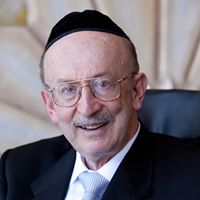
Gregory Weiss
view source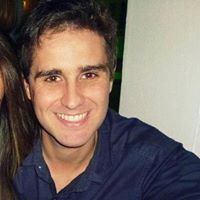
Gregory Weiss Costa
view source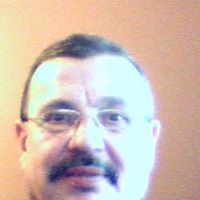
Gregory Weiss
view source
Greg Weiss
view source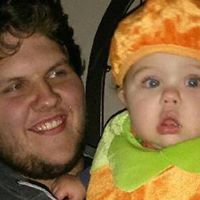
Gregory Weiss
view source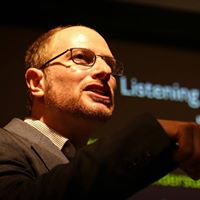
Gregory Weiss
view source
Sarah Gregory Weiss
view sourceGet Report for Gregory Weiss from Tujunga, CA, age ~61













